AMD Beema and Mullins APU Performance – 3rd Generation APUs
AMD Mullins APU Features
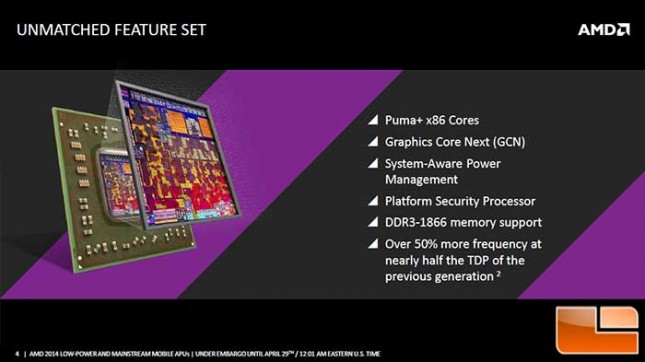
The Mullins APU includes four x86 PUMA+ cores, the successor to their Jaguar core which powers the XBox One and PS4, for streaming video and graphics which includes compatibility with the GCN architecture and Mantle. Integrated into the APU is an ARM Cortex A5 for a secured environment for hardware security. It is a dedicated co-processor to support cryptographic acceleration, it uses industry standard TPM APIs to secure the hardware. AMD has also increased the memory capabilities of the Mullins APU by integrating support for up to low powered DDR3-1866. The system aware power management, allows the APU to know what is going at the platform level to automatically adjust itself to keep thermal limitations in line. In addition, it can provide a higher frequency relative to previous generation, which is important for passively cooled designs in tablets.
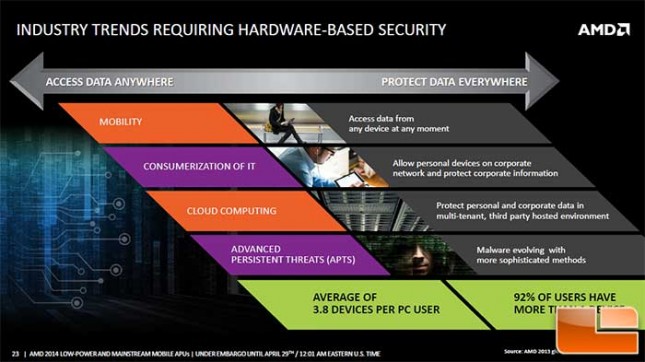
Industry trends are necessitating the integration of hardware based security. As users move away from a traditional desktop environment for their data, into a mobile world including Smartphones and Tablets, they want to access and protect their data anywhere they might be, which makes the securing of that data more difficult. Bring Your Own Device is a recent trend in the corporate world where users want to use their device within the corporate environment, hardware based security helps to ensure that data is protected not only on the server but also in the transmission of the data.
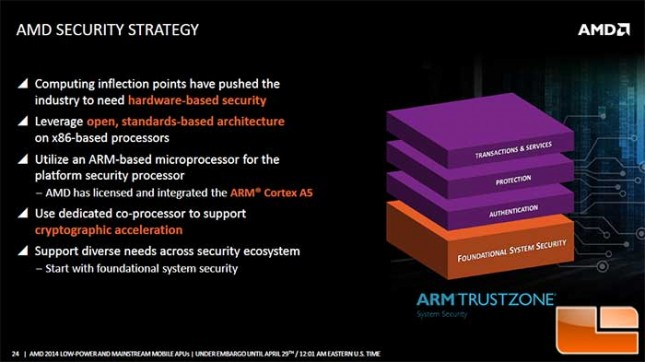
Rather than develop another proprietary system, AMD Beema and Mullins utilizes the open standards based architecture on x86 processors utilizing ARM Trust Zone security solutions. Trust Zone uses standard APIs and common interface across platforms. An ARM Cortex A5 microprocessor has been integrated into the APU with a dedicated cryptographic co-processor. Utilizing a Trusted Execution Environment, this enabled the ARM Trust Zone to secure the system at boot by authenticating the hardware at boot, this allows the system to move beyond just passwords into Biometrics and you can expect to see new approaches to anti-virus, anti-malware and data protection. It will also enable more secure web interactions such as video streaming, e-banking and digital wallets. This provides enterprise class security on all Beema and Mullins based devices.
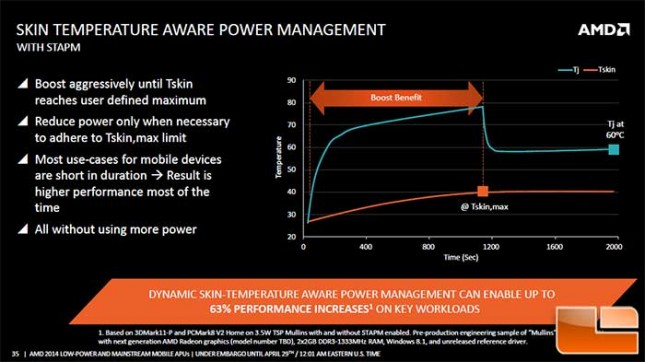
Power consumption has been lowered by up to 20% compared to previous AMD chipsets providing longer battery life (or similar battery life on a smaller battery). For the Discovery tablets, based on the A10 Micro-6700T, the average power usage is around 2.8W. With their innovative Skin Temperature aware power management system, they will constantly evaluate the temperature of the system and will dynamically boost performance when the temperature allows it, and will lower the system performance once the system temperature rises. This will be able to keep the shell of the tablet to a manageable temperature so users do not experience hot zones. AMD claims this will boost performance most of the time as the need is generally short lived. The High Boost speed is beneficial to provide users the feel of extreme responsiveness where applications open fast, doing what the user wants quickly, retrieving email, opening documents, starting applications, and loading web pages.
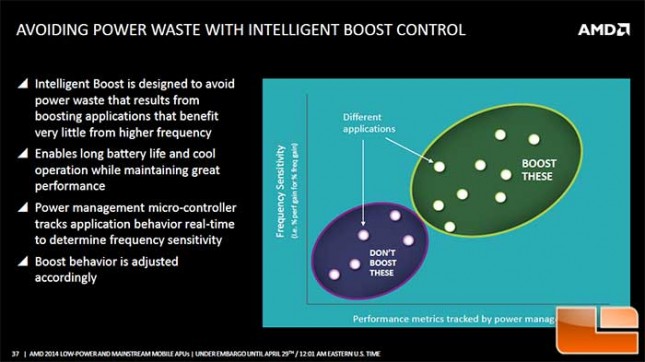
In addition to the temperature monitoring, AMD Beema and Mullins APU will be able to boost specific applications, which saves power and boost capability for those applications that need it. This will extend the battery life and keep the system cool. This is all done automatically, by the system evaluating the workload and determining whether the boost benefits the application; if the application is determined not to need the increased APU frequency, the Intelligent Boost will not boost the performance; saving the battery power. This process saves power, but at the same time increases performance in most use cases.
